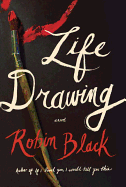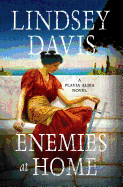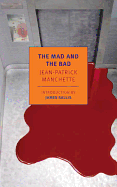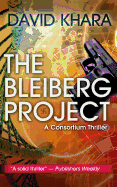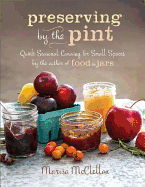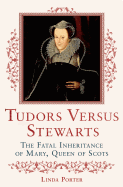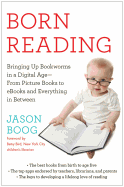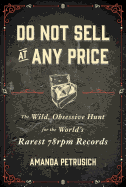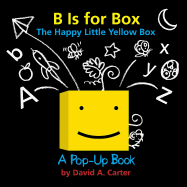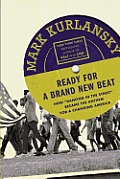 Ready for a Brand New Beat: How "Dancing in the Street" Became the Anthem for a Changing America by Mark Kurlansky (Riverhead, $16)
Ready for a Brand New Beat: How "Dancing in the Street" Became the Anthem for a Changing America by Mark Kurlansky (Riverhead, $16)
Kurlansky looks at the Motown recording machine and the history of an unlikely 1960s anthem, using "Dancing in the Street" by Martha and the Vandellas, with its undertones of protest, to explore the twin histories of the civil rights movement and popular music.
I Wear the Black Hat: Grappling with Villains (Real and Imagined) by Chuck Klosterman (Scribner, $16)
Chuck Klosterman draws upon society's most publicly condemned figures in an entertaining contemplation of villainy. For example, the question is not why Hitler was evil, but what our interpretation of his evilness reveals about society as a whole. Klosterman's strange humor provides all the necessary incentive to follow him through far-flung analogies and even the occasional personal tangent.
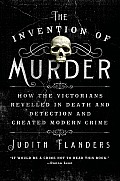 The Invention of Murder: How the Victorians Reveled in Death and Detection and Created Modern Crime by Judith Flanders (St. Martin's Griffin, $16.99)
The Invention of Murder: How the Victorians Reveled in Death and Detection and Created Modern Crime by Judith Flanders (St. Martin's Griffin, $16.99)
An examination of how murder and the murder mystery novel infiltrated our modern world by way of 19th-century Britain, The Invention of Murder tells the tale admirably well, even entertainingly. Flanders introduces a lengthy list of famous (and obscure) murderers and serial killers, culminating, of course, with Jack the Ripper.
Her Best-Kept Secret: Why Women Drink--and How They Can Regain Control by Gabrielle Glaser (Simon & Schuster, $15.99)
An informative investigation into why women drink and its effects on their health and social lives, Her Best-Kept Secret traces the evolution of women's relationship to alcohol. Alcohol, we've been told, combats stress, depression and menopausal symptoms, and Glaser offers stories of women who have successfully dealt with their alcoholism through alternative, private programs as well.
Thinking in Numbers: On Life, Love, Meaning, and Math by Daniel Tammet (Back Bay, $16)
The author of Born on a Blue Day returns with a smart, engaging, accessible guide to the intersection of mathematics, philosophy and daily life. Daniel Tammet explores math as it relates to family relationships, snowflakes, chess and a host of other topics, from Shakespeare learning the concept of zero to the unknowable poetry of prime numbers.
 Dogtripping: 25 Rescues, 11 Volunteers, and 3 RVs on Our Canine Cross-Country Adventure by David Rosenfelt (St. Martin's Griffin, $15.99)
Dogtripping: 25 Rescues, 11 Volunteers, and 3 RVs on Our Canine Cross-Country Adventure by David Rosenfelt (St. Martin's Griffin, $15.99)
There are two likely reactions to David Rosenfelt's entertaining, self-deprecating account of driving from California to Maine with 25 dogs: "That man is crazy" or "What a blast!" Either one is reasonable. Generous dog lovers volunteered to help, Cruise America allowed him and his wife to rent three RVs and, after a lot of planning, the crew set out.
Love Him or Leave Him but Don't Get Stuck with the Tab: Hilarious Advice for Real Women by Loni Love (Simon & Schuster, $15)
Loni Love's side-splitting advice guide on love and relationships is best enjoyed over a cocktail straight-up. She's got sass, she's got class and she'll kick your... preconceived notions of dating and courtship to the curb. Love tells women where it's at when it comes to the age-old manhunt.
The End of Night: Searching for Natural Darkness in an Age of Artificial Light by Paul Bogard (Back Bay, $16)
A blend of personal narrative, science and history exploring the effects of light pollution and the decline of true night, The End of Night takes readers from the dazzling Las Vegas Strip to national parks such as Acadia in Maine and Death Valley in California, where thousands of stars are still visible.
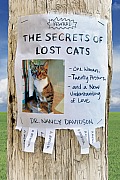 The Secrets of Lost Cats: One Woman, 20 Posters and a New Understanding of Love by Nancy Davidson (St. Martin's Griffin, $14.99)
The Secrets of Lost Cats: One Woman, 20 Posters and a New Understanding of Love by Nancy Davidson (St. Martin's Griffin, $14.99)
When therapist Nancy Davidson's beloved cat, Zak, went missing, she placed posters in her neighborhood; after many anxiety-filled days, cat and owner were happily reunited. During her search, Davidson became fascinated by other lost cat posters and the stories of the owners; she writes with sensitivity and respect about missing felines and their human friends.
---
 The Curiosity by Stephen Kiernan (Morrow, $14.99)
The Curiosity by Stephen Kiernan (Morrow, $14.99)
After Dr. Kate Philo and a team of scientists discover a man encased in an iceberg in the Arctic, they bring him back to their lab in Boston and reanimate him. With a love story at its core, The Curiosity asks provocative questions about whether science should explore altering life's natural order.
Loteria by Mario Alberto Zambrano (Harper Perennial, $14.99)
A young Mexican girl's poignant story unfolds in words and pictures as she slowly turns the 54 loteria cards and takes her chances. She's alone in a center for children. She won't talk to anyone. At the story's heart is a mystery to be slowly revealed as each card is turned over.
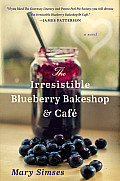 The Irresistible Blueberry Bakeshop and Cafe by Mary Simses (Back Bay, $15)
The Irresistible Blueberry Bakeshop and Cafe by Mary Simses (Back Bay, $15)
A big-city attorney, on a quest to deliver a letter from her grandmother to an old flame, falls under the spell of small-town life. She encounters a cast of locals whose ways seem foreign to her, but slowly become more endearing. Simses has crafted a wholesome love story, infused with the pull-and-tug of romance and elements of mystery.
The Complete Short Stories of James Purdy by James Purdy (Liveright, $22.95)
James Purdy is considered by some to be an authentic American genius, yet most "well-read" Americans haven't heard of him. His subject matter is a cross between Nathanael West and Flannery O'Connor. Purdy deserves our rediscovery. The seemingly simple yet compelling prose of The Complete Short Stories belies the haunting, slightly creepy stories that live within.
The Rules of Wolfe by James Carlos Blake (Mysterious Press, $14)
In Blake's second Wolfe family novel, a young cousin ignores the family rules and winds up with an army of Mexican cartel assassins chasing him back to the border. Blake's "border noir" becomes a long, volatile bilingual chase scene full of killing, car crashes, drugs, double-crosses and desert storms.
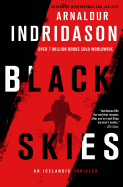 Arnaldur Indridason (Black Skies; Strange Shores) is perhaps the best known of the Icelandic mystery authors, with nine of his 12 Inspector Erlendur books translated into English. Erlendur is a taciturn detective whose life has been shaped by a childhood tragedy (his younger brother vanished in a blizzard). There's an underlying dark social commentary to all of Erlendur's cases; racism, drug addiction and Icelandic insularity come into play. This slightly gloomy view is emphasized by Erlendur's own obsessions with missing people and exposure to the elements.
Arnaldur Indridason (Black Skies; Strange Shores) is perhaps the best known of the Icelandic mystery authors, with nine of his 12 Inspector Erlendur books translated into English. Erlendur is a taciturn detective whose life has been shaped by a childhood tragedy (his younger brother vanished in a blizzard). There's an underlying dark social commentary to all of Erlendur's cases; racism, drug addiction and Icelandic insularity come into play. This slightly gloomy view is emphasized by Erlendur's own obsessions with missing people and exposure to the elements.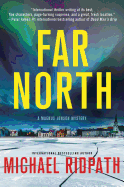 Michael Ridpath (Where the Shadows Lie; Far North) combines a current setting with Iceland's epic history. His series featuring Detective Magnus Jonson (who grew up in Boston, but had to return to his native Iceland when a Dominican cartel put a hit on him), occasionally contains fantastical elements from the ancient sagas familiar to all Icelanders.
Michael Ridpath (Where the Shadows Lie; Far North) combines a current setting with Iceland's epic history. His series featuring Detective Magnus Jonson (who grew up in Boston, but had to return to his native Iceland when a Dominican cartel put a hit on him), occasionally contains fantastical elements from the ancient sagas familiar to all Icelanders.









